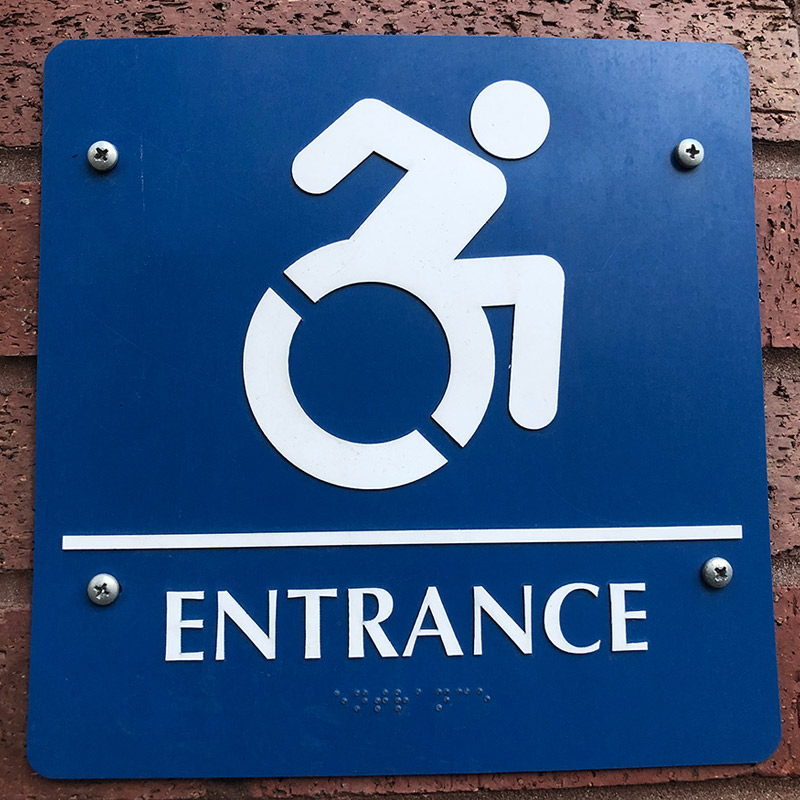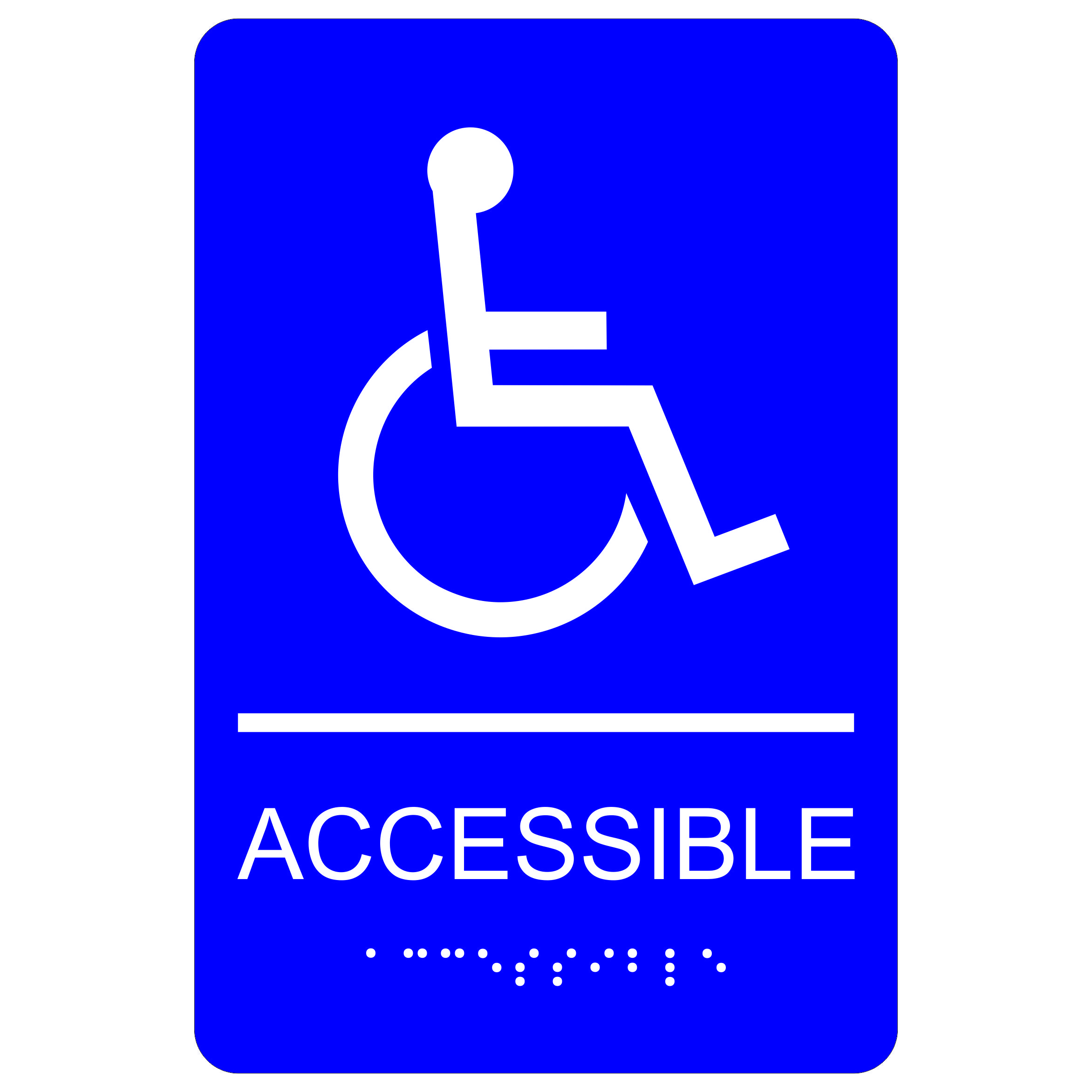Check out the Significance of ADA Signs in Public Spaces
Discovering the Trick Functions of ADA Indicators for Enhanced Access
In the world of availability, ADA indicators serve as quiet yet effective allies, making sure that rooms are inclusive and accessible for individuals with disabilities. By integrating Braille and tactile components, these indicators damage obstacles for the aesthetically impaired, while high-contrast shade schemes and clear fonts provide to diverse visual requirements.
Relevance of ADA Conformity
Making sure compliance with the Americans with Disabilities Act (ADA) is essential for cultivating inclusivity and equal gain access to in public rooms and offices. The ADA, enacted in 1990, mandates that all public facilities, employers, and transportation services accommodate people with specials needs, guaranteeing they enjoy the exact same civil liberties and possibilities as others. Compliance with ADA standards not only meets legal commitments yet also enhances a company's reputation by demonstrating its commitment to variety and inclusivity.
Among the essential elements of ADA compliance is the application of accessible signage. ADA indications are developed to make certain that individuals with disabilities can conveniently navigate with rooms and structures. These indicators need to abide by specific standards pertaining to dimension, font, color comparison, and placement to guarantee exposure and readability for all. Correctly executed ADA signage assists eliminate barriers that individuals with disabilities usually come across, consequently promoting their freedom and self-confidence (ADA Signs).
Moreover, adhering to ADA policies can reduce the risk of legal repercussions and possible fines. Organizations that stop working to adhere to ADA guidelines may encounter penalties or suits, which can be both harmful and monetarily burdensome to their public picture. Thus, ADA compliance is integral to fostering a fair atmosphere for everyone.
Braille and Tactile Aspects
The unification of Braille and responsive elements into ADA signs personifies the concepts of access and inclusivity. It is usually positioned under the corresponding text on signage to ensure that people can access the info without aesthetic help.
Tactile aspects prolong beyond Braille and consist of increased personalities and symbols. These parts are made to be discernible by touch, allowing individuals to recognize space numbers, washrooms, leaves, and other vital locations. The ADA establishes specific guidelines regarding the dimension, spacing, and placement of these tactile components to optimize readability and make sure consistency throughout various atmospheres.

High-Contrast Color Pattern
High-contrast color design play a crucial duty in enhancing the presence and readability of ADA signs for individuals with visual disabilities. These plans are necessary as they take full advantage of the difference in light reflectance in between message and history, ensuring that indicators are easily noticeable, even from a range. The Americans with Disabilities Act (ADA) mandates making use of details color contrasts to suit those with limited vision, making it an essential facet of conformity.
The efficacy of high-contrast colors depends on their capacity to stick out in numerous lights problems, including poorly lit environments and locations with glow. Generally, dark message on a light history or light text on a dark history is used to attain optimum comparison. Black message on a yellow or white history offers a raw visual difference that aids in fast acknowledgment and understanding.

Legible Fonts and Text Size
When considering the design of ADA signage, the option of readable typefaces and appropriate message dimension can not be overemphasized. The Americans with Disabilities Act (ADA) mandates that typefaces must be not italic and sans-serif, oblique, script, extremely decorative, or of uncommon kind.
The size of the text likewise plays a pivotal role in access. According to ADA guidelines, the minimum text elevation should be 5/8 inch, and it ought to increase proportionally with watching distance. This is specifically essential in public rooms where signage requirements to be read promptly and properly. Uniformity in text size adds to a natural aesthetic experience, aiding individuals in browsing settings effectively.
Additionally, spacing in between letters and lines is indispensable to clarity. Ample spacing protects against characters from showing up crowded, boosting readability. By adhering to these criteria, developers can substantially improve availability, ensuring that signs serves its designated function for all people, no matter of their aesthetic capacities.
Reliable Positioning Methods
Strategic positioning of ADA signage is vital for taking full advantage of accessibility and making certain compliance with lawful criteria. Effectively positioned indications guide individuals with specials needs properly, helping with navigation in public rooms. Key considerations include closeness, visibility, and elevation. ADA guidelines state that indications must be installed at an elevation in between 48 to 60 inches from the ground to guarantee they are within the line of sight for both standing and seated individuals. This standard elevation array is vital for inclusivity, making it find more information possible for mobility device customers and people of varying heights to gain access to info easily.
Furthermore, signs have go to this web-site to be put adjacent to the latch side of doors to permit simple identification prior to entry. Uniformity in sign placement throughout a center boosts predictability, minimizing confusion and enhancing overall user experience.

Verdict
ADA indications play an essential role in promoting ease of access by incorporating attributes that deal with the requirements of people with disabilities. Incorporating Braille and responsive components makes certain crucial details comes to the visually impaired, while high-contrast color pattern and readable sans-serif typefaces enhance visibility throughout numerous lights problems. Reliable placement strategies, such as ideal placing elevations and strategic locations, even more help with navigating. These components jointly cultivate a comprehensive environment, underscoring the importance of ADA conformity in making certain equal access for all.
In the world of availability, ADA signs serve as quiet yet effective allies, making certain that rooms are navigable and inclusive for individuals with impairments. The ADA, enacted in 1990, mandates that all public centers, companies, and transportation solutions fit people with handicaps, ensuring they delight in the very same legal rights and chances as others. ADA Signs. ADA signs are designed to make navigate to this website certain that people with impairments can conveniently navigate through structures and spaces. ADA guidelines specify that indications ought to be placed at an elevation in between 48 to 60 inches from the ground to ensure they are within the line of sight for both standing and seated individuals.ADA signs play a vital function in advertising availability by integrating functions that address the demands of individuals with specials needs